„New Work“ and why companies need to become more empathetic
TREND REPORT talks to Toby Martin, CEO of Extensis, a specialist in font and digital asset management. The company is based in Portland, Oregon.
Toby, it is my pleasure to have a conversation with you today about what „New Work“ means to you and why companies today should, indeed must, be much more customer focused. Extensis, based in Portland/Oregon, USA, is a specialist in font and digital asset management and has completely changed within the last 4 years. Has the company really reinvented itself? What was the catalyst for this? Was it the Covid-19 pandemic?
The transformation in our company started about 3 to 4 years ago and was not related to the Covid-19 pandemic. Our customers were the drivers of change, initiating it. They demanded more ways to interact with us. Software-as-a-service and cloud technologies were already more important to them. It was the explicit request of customers for an improved product experience. We realized that we had to take action to address customer needs. Otherwise, we risked becoming obsolete as a company. So, it was now up to us to gain an understanding of what our customers expect from us, how and when.

How exactly do I have to understand this externally driven change?
During the first 25 years of our operation, all of our software was on-premises, located directly at the customer’s site on their servers. We didn’t know exactly how it was actually being used and how customers were interacting with our product. We always thought we knew. But the fact is that there is a difference between theory and reality. The process of transforming Extensis has been 100% driven by our customers. That means we went from being a product-oriented organization to a customer-oriented organization. This is the transformation we have made in the last 4 years.
This shift to supporting our customers has changed everything in our company. It started with how we bring our products to market, how the products are designed and supported, and most importantly, what the future of the products may look like. We broke away from what we thought we knew in solutions and marketing channels. We had to re-engineer everything, so we had better access to customer experience about what was actually going on. That was different from what we thought we knew. The transformation of our products supports that. We’ve integrated more features that show us what customers actually use, what they value and how they interact with it. This enables us to develop what works. In turn, we leave out what doesn’t benefit customers. That wasn’t possible with the old on-premises products of Extensis‘ first 28 years.
Can you explain at this point what the main lessons learned were or are for the way Extensis works and organizes itself? I am talking about development methods and working methods within Extensis – not about the product. For example, are we moving closer to the DevSecOps principle? The more so as the process is ongoing.
The first step happened about 3 years ago when we set up a completely new team for Customer Success. It included the old sales, support and technical service groups, but was expanded to include many new team members. They focused exclusively on listening to customers during maintenance renewals and learning more about how we could help them solve workflow issues at other times. This team evolved over the three years as we learned more. We deployed resources in a way that achieved the best return on investment for our customers. Prior to this evolution, we had already moved away from the waterfall approach (4-5 years prior), so we were able to deliver solutions to our customers much faster. Once we figured out more about what was most important, we were able to deliver products and solutions faster. Without restructuring every team in the company, we would never have been able to work together so well. Today and in the future, we will consequently focus on what customers actually need, rather than what we think they could or should need.
Have customers been involved in the change process?
Yes, we included the customers. First, we had commissioned a survey by an external consultant. We also did research directly among our customers. Throughout this process, we kept doing validations to make sure we were on the right track. Customers were always involved and gave us feedback on which product changes and improvements made sense and which did not. We wanted to make absolutely sure that we were offering solutions that really made sense and would enable our customers to be successful.
Has the „organization“ of Extensis as such also been changed? And how was the internal team involved?
That was an even bigger transformation. In 2018, we had a sales organization in place whose job it was to sell software. We have since dropped „sales“ as a term in the company. All employees from this department are now responsible for „Customer Success“. Because we believe that if you ensure that customers are successful, they will remain our customers for a longer period of time.
So, we implemented a completely new organizational structure, especially for those employees who generate the revenue. This affected about 40 percent of the company, who, after appropriate training, have now become responsible for „Customer Success.“ As a result, other teams within the company have also changed: Product Development and Product Marketing have also aligned themselves with „Customer Success“ and restructured accordingly.
Part of that was reskilling the teams. So, it wasn’t just about changing our current workforce, it was about changing the entire construction of our organization around Customer Success. That, in turn, has led to other parts of the company transforming their marketing, their product management, and their product development.
Why is it important for companies to be more empathic?
We know about the challenges and problems. We know how creative work has changed in agencies and companies, this also due to the many new digital channels and platforms. The pandemic has also contributed to these changes. It was clear to us that this would require a completely new approach. To map the creative workflows in an ideal software solution was our goal. „Empathy“ for us means that we listened to our target group. We not only came to understand, but also felt what was needed and wanted. This resulted in the new cloud strategy and the completely new product „Connect“. And the brand name speaks for itself because this is what we are striving to achieve: To connect creatives with their fonts and assets in such a way that they can access them quickly and seamlessly at any time and from anywhere. This is how we help make workflows better and actually give creatives more time to focus on what’s important: Unlimited creativity.
So how long did it take Extensis to realign the company like that?
This change has taken us a total of about 3 years, and we have adopted a new approach to development and sales. The idea is to first discuss with customers what is necessary to shape their work processes in a meaningful way and to be successful. The idea is to build a long-term relationship with our customers, rather than simply taking orders and selling products. We want to be and remain genuine partners for our customers. And if we fall short in any of these areas, we expect to hear about it and resolve the challenges that we may introduce so it’s a constantly evolving process and one we will never complete!
Has this process of reorientation now been completed or is it ongoing?
Oh, it’s still ongoing. We have been changing the process practically every quarter. For instance, we offer regular updates to our team in terms of training. We’re constantly looking for changes we can take advantage of that will allow us to be better partners with our customers and offer better products, like new systems we can put in place to improve our operations.
One example is the development of a new sales program. In Europe in particular, we are establishing sales channels that are not just focused on technology but are designed to provide additional benefits for our customers. There will also be continuous training and expert contacts. And we will continue to change constantly because both customers and the market are changing. We have to try to anticipate this and, ideally, always stay one step ahead.
We have developed an entirely new platform and not just updated existing solutions.
Toby Martin
I’m sure there has been feedback from your customers as a result of all these changes. Is there anything you can tell us more about that?
The first feedback was usually along the lines of, „Now all of a sudden everything is different and we don’t understand why.“ We then spoke to customers, some of whom had been using our products for decades and explained our points of view to them. The idea was to explain why the change in our organization would bring benefits to both sides. There were customers who couldn’t or didn’t want to understand this but continued to work with us and our products because we still offered them added value. Others confirmed that our changes made sense and that we understood them, their workflows and the challenges of the digital processes.
As we introduce our new products and Extensis Connect, customers better understand why we did what we did and why it is now more convenient and secure for them. We have developed an entirely new platform and not just updated existing solutions. The advantages are obvious: Extensis delivers high-quality solutions with regular updates and users don’t have to worry about anything. This also means there is no need to hire extra IT specialists for maintenance and updates.
Many of the large German customers have been working with us for a while, such as various agencies and large retailers. Some were reluctant to change at first because it had worked quite well for them all this time. But the feedback we’ve received recently has become more and more positive, because our customers now understand better why we acted the way we did and wanted to completely reinvent ourselves. It can be difficult to say to customers and partners ‘trust us’ but for those who did, we are maintaining that past relationship and look forward to growing it in the future.
Was Extensis among the first to reorganize the company compared to its competitors?
Although I would like to answer „yes“ to your question, the answer is no. Software-as-a-service is not new. Adobe, for example, has offered it in the creative space for many years. And more and more companies are making the shift. In our case, we actually started from scratch. So, it wasn’t about re-packaging what already existed, sometimes called ‘lift and shift’. It was about defining the value we bring to our customers and, as we say, „controlling the creative chaos with font management and digital asset management.“ We didn’t just say, „Take everything and move it to the cloud.“ We certainly didn’t want to do that, because we had seen others try and fail. So, we decided to take a new approach to make that happen. And, of course, that took some time and it cost more to do it during a pandemic. That was a real challenge for us as a company. But in the end, it actually turned out to be a better designed solution. So, we’re not the first to go down this path, but we were able to learn from the mistakes of our competitors.
Extensis no longer considers itself a strictly „product company“?
To us, the most important part is the transformation story. Starting with customer success, for us transformation was all-encompassing. Most other companies that are involved in the creative process are making amazing tools: for example, plug-ins and graphics that you can interact with in full-motion video and the like. So, they’re creating a whole new set of assets. But what they haven’t figured out yet is what happens when you’re done creating that content? In the past, you would have cataloged it, assigned numbers to it, and stored it in a library system or lost it in a poorly designed database. And now imagine creatives in agencies or companies that are changing employers and all their knowledge of where to find design assets is lost. Why are we different? I would say the difference is that we’ve been working with creatives in the same ecosystem for 25 years and know exactly what they need for meaningful and seamless processes.
Looking at Extensis as it was four years ago and as we are today, you can see that it is no longer the same company. There is one exception, and that is that we continue to add value to our customers the same way: by storing digital assets and controlling creative chaos so designers can do their best work. That’s the most important thing that has guided us throughout this transition.
Change is always difficult: change management, developing new products, engaging our customers, and then doing it all during a pandemic. Just months or years ago, it looked like we had a lot of work ahead of us. But now we have this big turnaround under our belt, and this is the start of something completely new.
Throughout this change process, what has the Covid-19 pandemic changed for Extensis?
Extensis was an early adopter of working from home. So, during the pandemic, the team immediately started working 100 percent from home, because the health and safety of our employees is our top priority. It wasn’t a big change for us. We were able to continue working at the same pace and efficiency. We were fortunate because we already had all the tools in place (Slack, Zoom, Confluence / Jira, Salesforce) for decentralized working and the team was familiar with all of them. So, there was no need to build a new infrastructure; the processes for collaboration and communication were already established.
Is there not a desire in your teams to meet in person? Don’t they want to see their colleagues again, in the coffee kitchen or in the meeting rooms?
We are a small team, and we all know each other quite well. There was indeed a request in some cases to work in a „real“ office some of the time. But no one really wants to do that full-time anymore. The advantages of a home office are more significant: there is no daily commute, and you have more time for yourself and your family. „Happy hours“ in front of a monitor, however, just aren’t the same as an actual meeting in the coffee kitchen, for example. We are talking here about the social component of working in a team. And there is sometimes the wish for some more in person meetings in the real world. Now, in summer, we will certainly plan some team activities, as most of our employees live in Oregon and this is easy to organize. Of course, the team can also get together for training or meetings in an office space at any time and as needed. However, this is actually not often necessary in our corporate organization because we have everything it takes to have a comfortable and productive work environment – at home.
You also need to know that we have colleagues living in multigenerational households, with children who cannot be vaccinated, or with elderly parents or grandparents. It is therefore very convenient that they do not have to expose themselves to the risk of being infected during the pandemic and now.
So, everything is currently going according to plan for Extensis, and we are very pleased that the transformation has been successful and is also being accepted by customers.
Creative Commons Lizenz CC BY-ND 4.0
Sie dürfen:
Teilen — das Material in jedwedem Format oder Medium vervielfältigen und weiterverbreiten und zwar für beliebige Zwecke, sogar kommerziell.
Der Lizenzgeber kann diese Freiheiten nicht widerrufen solange Sie sich an die Lizenzbedingungen halten.
Unter folgenden Bedingungen:
Namensnennung — Sie müssen angemessene Urheber- und Rechteangaben machen, einen Link zur Lizenz beifügen und angeben, ob Änderungen vorgenommen wurden. Diese Angaben dürfen in jeder angemessenen Art und Weise gemacht werden, allerdings nicht so, dass der Eindruck entsteht, der Lizenzgeber unterstütze gerade Sie oder Ihre Nutzung besonders.
Keine Bearbeitungen — Wenn Sie das Material remixen, verändern oder darauf anderweitig direkt aufbauen, dürfen Sie die bearbeitete Fassung des Materials nicht verbreiten.
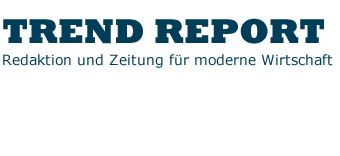


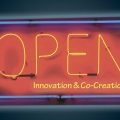


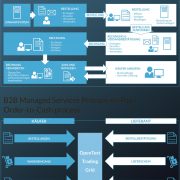

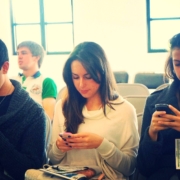
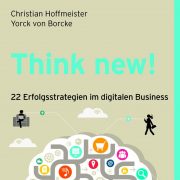


Kommentare sind deaktiviert.